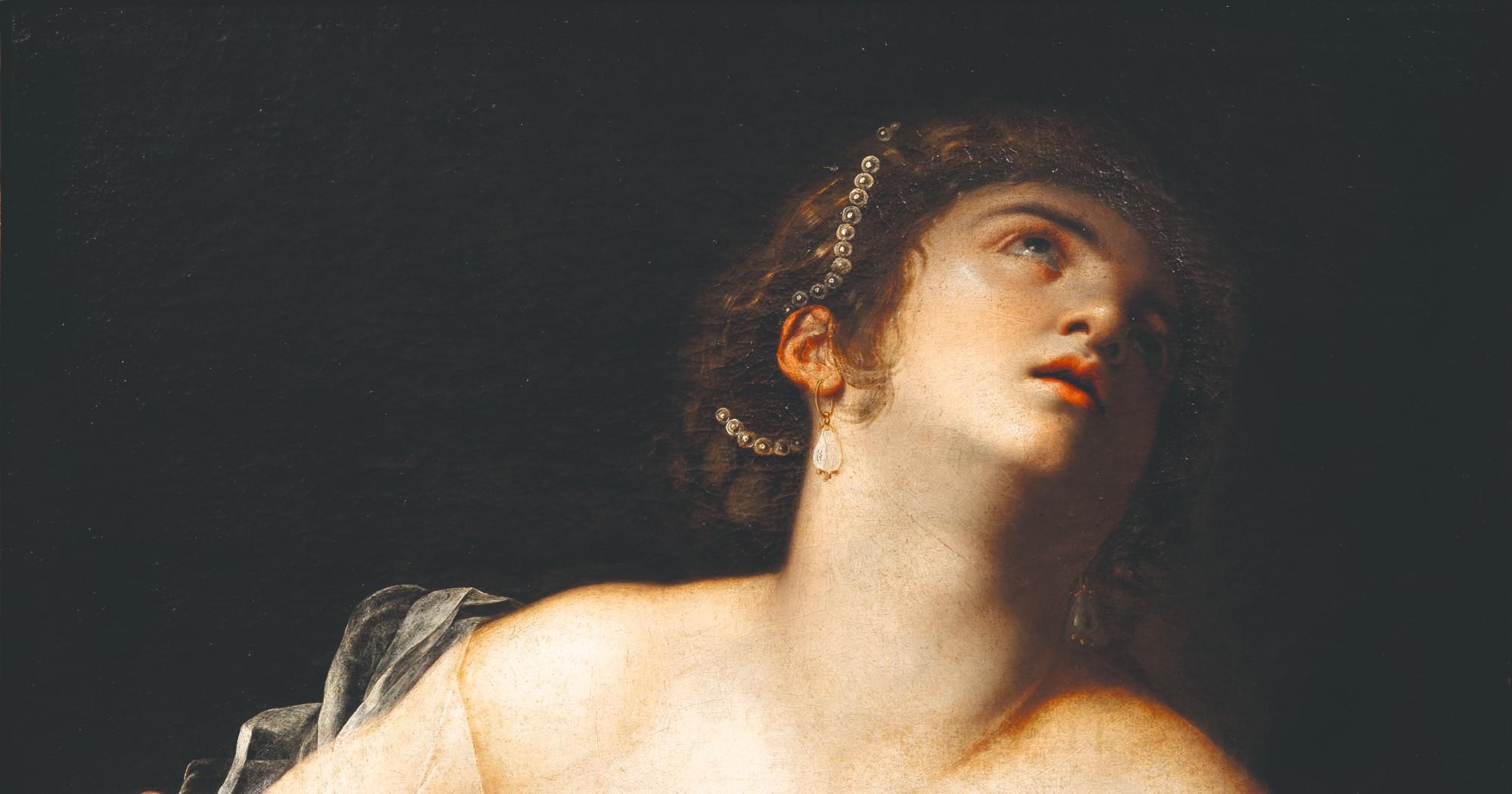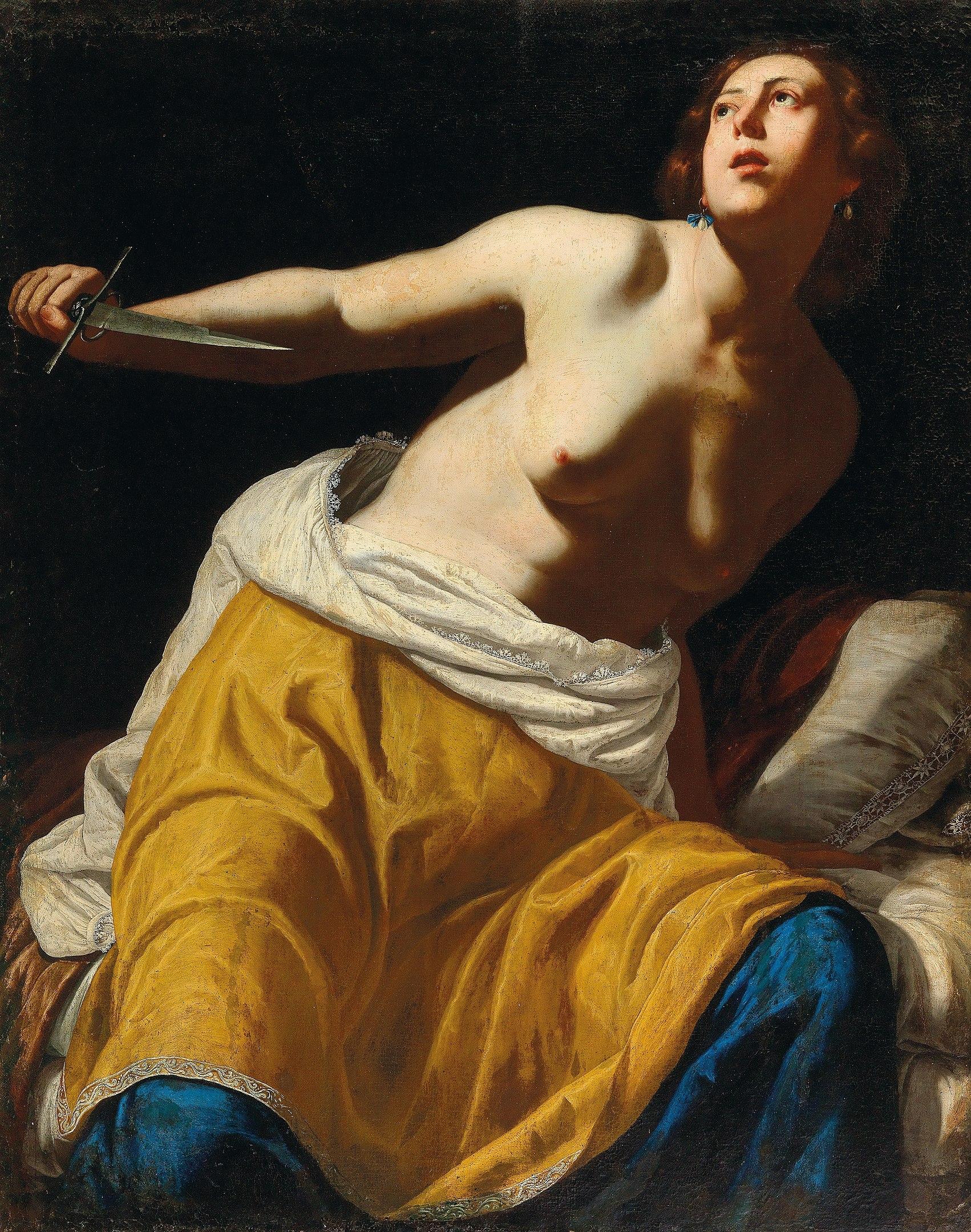Born in Rome in 1593, Gentileschi began her training early on in the workshop of her father, Orazio Gentileschi. She would go on to enjoy a successful career and an international clientele. Though she was the first woman to become a member of the Accademia di Arte del Disegno in Florence, Gentileschi was largely lost to history until the 1970s, when scholars began a concerted effort to add more female artists to the annals of art history. Since then, Gentileschi has become a feminist icon of art history, and there has been much interest in her life and works.
Portrayals of the Roman noblewoman Lucretia is a subject that Gentileschi returned to several times in her career, perhaps because she related to her story. According to Roman historians, Lucretia was raped by Tarquin, a son of the last king of Rome. As Lucretia pleaded for justice for her assault, she killed herself by plunging a knife into her chest. Her rape and subsequent death were seen as representative of the tyrannical abuse of power by Roman royalty and her story became a rallying cry in the fight for a Roman Republic.



























![DEl Kathryn Barton [Australian b. 1972] the more than human love , 2025 Acrylic on French linen 78 3/4 x 137 3/4 inches 200 x 350 cm Framed dimensions: 79 7/8 x 139 inches 203 x 353 cm](/sites/default/files/styles/image_5_column/public/ab15211bartonthe-more-human-lovelg.jpg?itok=wW_Qrve3)



